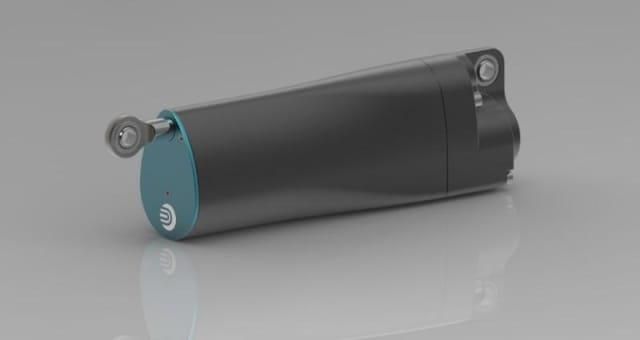
Luxury automaker partners with Cranfield University and Domin on fully active suspension technology.
When it comes to industrial applications for 3D printing, the two most obvious ones are aerospace and medical devices. It’s easy to see why: both industries deal in low-volume, high-margin parts which often require costly materials that are challenging for conventional machining and fabricating techniques.
The automotive industry, in contrast, generally deals in high-volume, low-margin parts using less expensive materials that are much more amenable to traditional manufacturing processes.
While it’s true that prototyping and, in some instances, jigs and fixtures benefit from 3D printing technology, full-scale additive manufacturing is still a rarity in the auto industry.
That may be changing, however, with the announcement that British sports car maker Aston Martin has teamed up with Polish hydraulic systems manufacturer Domin and Cranfield University to develop a new suspension system in just six months.
Additive manufacturing is the key to this tight timeline, with the design for the new fully active suspension technology (FAST) based on Domin’s 3D-printed valve technology.
The valves utilize 25 fluid galleries operating in unison to transport hydraulic fluid throughout the system, all of which are encased within a core produced by additive manufacturing.
According to Domin, “The curvilinear nature of the unit internals is achievable only through additive manufacture, which also allows its exceptional mechanical properties.”
The FAST system is contrasted with a conventional passive suspension, which compensates for the effects of changing road surfaces through a combination of variable damping and spring rate.
Domin claims that its FAST units will provide “infinite variability in damping, with a step response as fast as 0.015 seconds…in a package weight under 4kg per unit.”
While Aston Martin will provide the test rig for putting FAST units on the road, Cranfield will provide vehicle modelling and early-stage validation. Surprisingly, the project is funded by the UK’s Office for Low Emission Vehicles, which isn’t exactly the most immediate association one would make with Aston Martin. No doubt, support from the Niche Vehicle Network —an industry association of specialty carmakers—helped secure the government backing.
Obviously, this is still a far cry from using additive manufacturing to produce components for mass market vehicles, but it does point toward the potential impact 3D printing technology can have on the auto industry in the near future.
As the costs of additive manufacturing come down and the requisite domain expertise to use it proliferates, many of the same benefits that make AM appealing for aerospace and medical device applications could accelerate adoption in the automotive industry.
Read more at ENGINEERING.com
